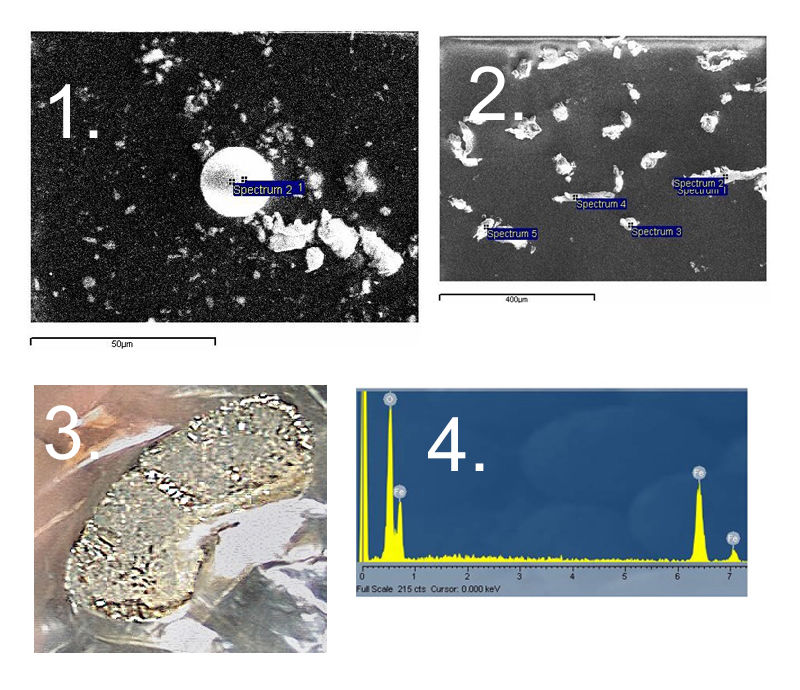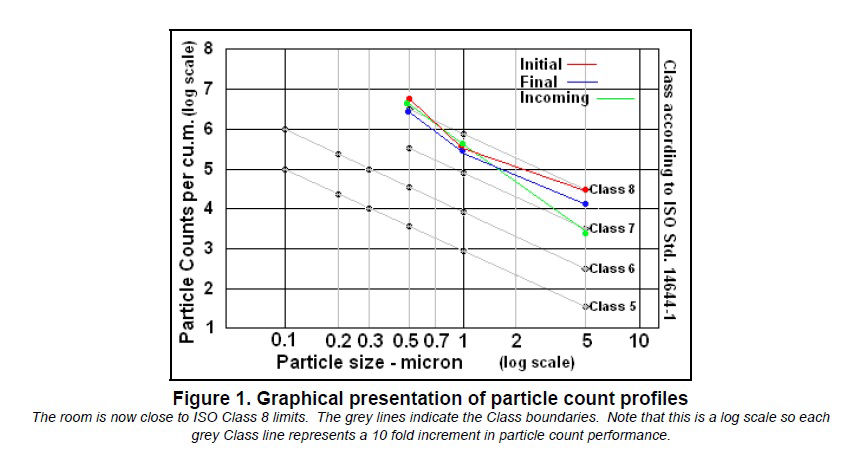Disaster recovery - Cleaned burst ceiling tiles
The client’s ceiling came down because of a gas discharge. The detector head had been triggered by a false alarm, then the gas system armed itself and was discharged in error. This filled the room with broken ceiling tiles and dust from the ceiling void. The dust coated everything in room, including an open-topped tape library. A builders’ clean had been completed but we followed that with a clinical clean, which included the interior of server cabinets and the tape library. We restored the room to better than ISO Class 8 standard.
Poor reliability linked to debris left over from print room operations
A client converted a print room to a computer room and installed equipment, including a tape library, processors and storage servers. The room was found to be too unreliable to support an upgrade. Samples we had collected from a visibly contaminated expansion rack show fragments of iron, copper and galvanising, together with small iron balls that are used in laser printing processes. At a higher level in the rack, finer iron particles and smaller iron spheres were identified in the fan plenum. Analysis of the finer material found on fan blades and other internal surfaces of a server also showed the presence of rust which can affect, among other things, tape read/write performance. The floor void had remained dirty after the initial conversion and the airflow would carry the dirt into the room. We used tacky cloths and high filtration vacuum cleaners to restore meticulously ISO Standard 14644-1 Class 7 to the room. We also used similar methods to decontaminate internally the tape library and live server cabinets.

Disaster recovery - Cleaned burst sound-deadening mat
A burst sound-deadening mat in an air handler unit filled the floor void and machine room with glass fibre material. Our technicians cleaned the data centre using a fully risk-assessed process with appropriate PPE (double gloved hands, full protective clean room suits, face masks) with no interruption to service.
Pre- and post-clean particle counts and electrostatic discharge comments included in cleaning report
During the clean of all surfaces, from floor screed to ceiling tile level, we measured the particle count performance and compared the results with ISO 14644-1 Standards. We found the room to be performing better than ISO Class 8 under all conditions of use and throughout the cleaning operation. Our experience indicates that the room, with careful use, would probably routinely perform close to ISO Class 7 once the effects of the cleaning activity have subsided. We also measured resistivity of the floor tile surface before and after surface finishing. We found that in both cases resistivity exceeded 50 Gohm, a dangerously high value, and one that demands that wrist straps be worn for all maintenance operations involving IT equipment. This is to prevent damage to silicon devices by electrostatic discharge. These observations, along with other comments about filtration in the room, were included in a four page cleaning report given to the client.

